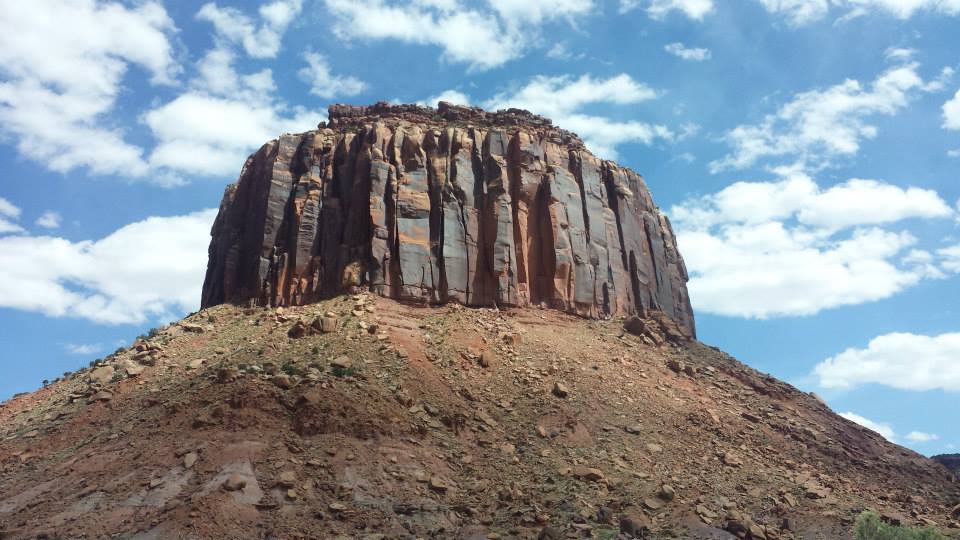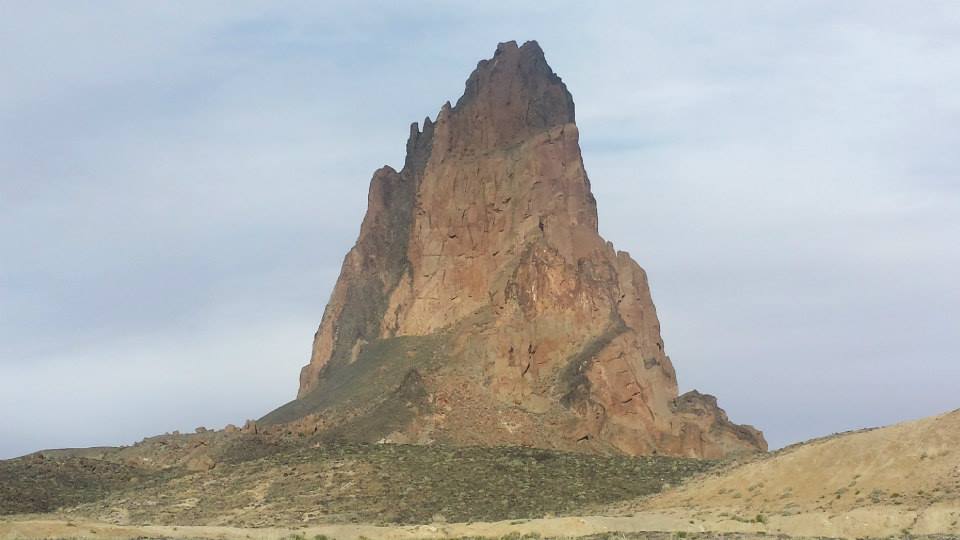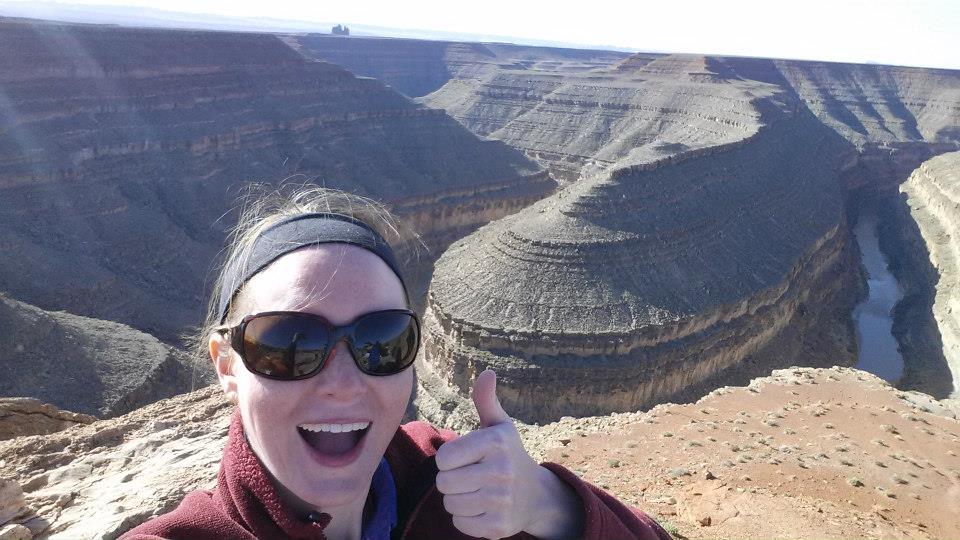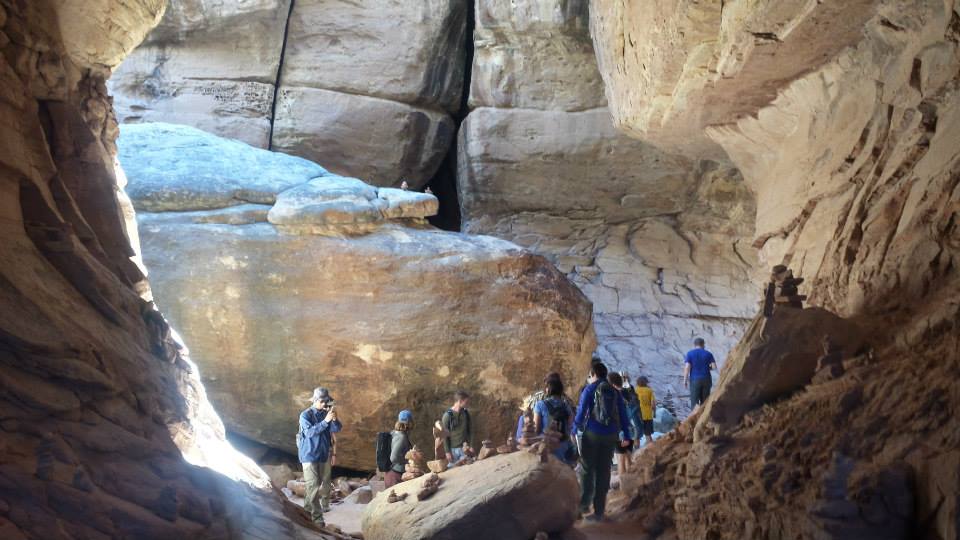LPL Fieldtrip Spring 2015: Canyonlands
by Shane Byrne
This semester, the LPL field trippers returned to a site previously visited on our fieldtrips several years ago—Canyonlands in southeast Utah. This national park contains many features familiar to planetary geologists such as graben (tectonically formed trenches where the floor has dropped in elevation) and an impact crater (although previously this was argued to be a salt diapir).
Driving up to Canyonlands from Tucson takes a day in itself, but there was plenty to see along the route. We stopped at Walnut Canyon in Flagstaff to view some of the Colorado Plateau Stratigraphy and spectacular cross-bedding within the Coconino sandstone. Driving further, we passed through exposures of the Chinle formation and later Monument Valley, which all expose different portions of the enormously thick stratigraphic record within the Colorado Plateau. Hundreds of millions of years of history are on display here, containing chapters from marine environments and inland deserts. More recently, volcanic activity has been common on the plateau, some of these volcanoes have been removed by erosion and the vertical conduit through which magma and brecciated rock moved to the surface is often preserved. Agathla Peak in northern Arizona is one such feature (known as a diatreme) that we stopped to survey. The Plateau is no longer collecting sediments as it has been uplifted to great height. This uplift had other effects such as prompting previously slow-moving meandering rivers to erode downwards. Deeply incised meanders near the Arizona-Utah border are a testament to the uplift that has occurred here and the power of water to quickly erode though rock when the situation demands.
Our first stop in Canyonlands was Upheaval Dome, a circular structure with upward tilted layers at its center. The origin of this feature has been debated for decades. There is a thick layer of salt buried deep beneath Canyonlands. In similar locations (like Iran), this salt rises buoyancy through the rocks in a diapir and leads to circular surface features (circular features in Triton’s “cantaloupe terrain” are also thought to be due to icy diapirs). Lately though, it’s been recognized that this is probably a heavily eroded impact crater. Certain types of fractures that we observed in the surrounding rocks require very large pressures to form, which can only realistically be produced during an impact event.
The next day, our group drove around to the southern entrance to the park. This is a little used access point through Beef Basin—little used because the roads in question are frequently impassible even to 4WD vehicles. One particularly notorious stretch known as Bobby’s Hole provided the biggest challenge, which luckily we navigated without significant incident. The reward for this rather arduous drive was to be able to drive through the Canyonlands Graben. This is a set of normal faults that allow blocks of rock a few hundred meters wide to drop downward and form steep walled trenches that we can drive through. We see graben on many solar system bodies where the surface is being stretched apart. In the case of the Canyonlands Graben, the surface rocks are being stretched because the Colorado River has eroded a deep canyon and the rocks to the east of this canyon (no longer buttressed) can now glide westward on the buried salt layer. Moving past the Graben, we stopped at the joint trail, where incredible examples of jointed rock are visible. The joints themselves are about 10 meters deep here and wide enough to walk through at the bottom. Indeed, they are wider at the bottom than the top as the lower rock layers are more easily eroded so that only a thin strip of sky is visible overhead.
Canyonlands is a truly unique place with a mix of tectonic and impact features alongside a detailed stratigraphy that records long periods of Earth’s environmental conditions. In those respects, it is similar to areas on Mars currently being explored by rovers and orbiting spacecraft. It was certainly a long drive to get to Canyonlands and then back from Tucson, but it was certainly worth every mile.
|
|
|
 |
|
| Photos courtesy of Ali Bramson. | |




